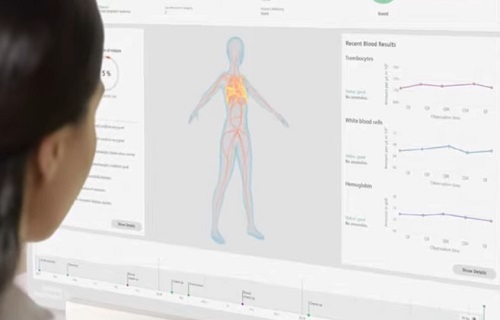What is Bone Cancer?
Bone cancer is a type of cancer that originates in the bones. It occurs when there is an abnormal growth of cells within the bone tissue, which can form a mass of cancerous cells known as a tumor. Bone cancer can either start within the bone itself (primary bone cancer) or can spread to the bones from other parts of the body (secondary bone cancer).


What is Survival Rates Of Bone Cancer?
According to the American Cancer Society, the 5-year survival rates for the most common type of bone cancer in adults, osteosarcoma, are as follows:
- Localized osteosarcoma (cancer that has not spread beyond the bone): about 77%
- Osteosarcoma that has spread to nearby tissues or lymph nodes: about 56%
- Osteosarcoma that has spread to distant parts of the body: about 28%
For chondrosarcoma, another type of bone cancer, the 5-year survival rates are generally higher, ranging from 80% to 90% for low-grade tumors to about 40% for high-grade tumors.
- The 10-year survival rate for localized osteosarcoma is around 68%.
- The 10-year survival rate for chondrosarcoma ranges from 78% to 86% for low-grade tumors and around 29% to 57% for high-grade tumors.
- For Ewing sarcoma, the 5-year survival rate is about 70% but this can vary based on the stage of the cancer and whether it has spread to other parts of the body.
- The 5-year survival rate for malignant fibrous histiocytoma, a rare type of bone cancer, is around 50% to 70% but again, this can vary based on the specific characteristics of the cancer and the treatment used.
What is Statistics About Bone Cancer?
- Primary bone cancer accounts for about 0.2% of all cancer deaths.
- The 5-year relative survival rate for primary bone cancer is around 70%.
- About 10-15% of people with bone cancer have a family history of the disease.
- The average age at diagnosis for osteosarcoma is 15 years old, while for chondrosarcoma it is 51 years old.
- About 10% of all bone tumors are cancerous.
- The most common symptom of bone cancer is pain, which is present in about 90% of cases.
- The most common sites for bone cancer to spread are the lungs, other bones and the liver.
- About 5-10% of all bone cancers are Ewing sarcoma.
- Malignant fibrous histiocytoma accounts for less than 5% of all bone cancers.
What is Causes of Bone Cancer?
- Inherited Genetic Mutations: Certain inherited genetic mutations can increase the risk of developing bone cancer. For example, people with Li-Fraumeni syndrome have a higher risk of several types of cancer, including bone cancer. In this syndrome, a mutation in the TP53 gene increases the risk of cancer. Another example is hereditary retinoblastoma, a rare eye cancer that can increase the risk of bone cancer in some cases.
- Radiation Exposure: Radiation therapy for another cancer can increase the risk of developing bone cancer. The risk depends on the amount of radiation and the area of the body that was treated. People who have been exposed to high levels of radiation due to accidents, such as nuclear disasters, may also be at a higher risk of developing bone cancer.
- Paget’s Disease: Paget’s disease is a chronic bone disorder that occurs most commonly in older adults. In this disease, bone tissue is broken down and replaced with abnormal bone tissue, leading to bone deformities and an increased risk of fractures. Although rare, Paget’s disease can increase the risk of developing bone cancer.
- Previous Bone Injuries: Some studies have suggested that people who have had previous bone injuries, such as fractures or orthopedic surgery, may have a slightly higher risk of developing bone cancer. But this risk is still very small.
- Age: Bone cancer can occur at any age but it is most commonly diagnosed in children and young adults. Osteosarcoma, the most common type of bone cancer in children and young adults, usually occurs between the ages of 10 and 30. Chondrosarcoma, on the other hand, is more common in older adults.
- Gender: Males are slightly more likely than females to develop bone cancer, although the reasons for this are not well understood.
- Race: Some types of bone cancer, such as osteosarcoma, are more common in people of European descent. But, the reasons for these racial differences are not clear.
What is Symptoms of Bone Cancer?
- Pain: Pain is the most common symptom of bone cancer. It may initially be intermittent and gradually become more constant as the cancer grows. The pain may be worse at night and may be relieved by over-the-counter pain medication.
- Swelling Or A Lump: A lump or swelling may be felt in the area of the bone where the cancer is located. The lump may be tender to the touch and may feel warm.
- Fractures: Bone cancer can weaken the affected bone, making it more prone to fractures. If a bone fractures without an obvious injury, it may be a sign of bone cancer.
- Fatigue: As with many types of cancer, bone cancer can cause fatigue and weakness.
- Unexplained Weight Loss: Weight loss can be a sign of advanced bone cancer, although it is not a common symptom in the early stages of the disease.
- Reduced Mobility: Bone cancer in the leg or hip may make it difficult to walk or may cause a limp.
- Numbness Or Tingling: If bone cancer is pressing on nerves, it can cause numbness, tingling, or weakness in the affected area.
How to Test, Diagnose And Detect Bone Cancer?
- Physical Examination: During a physical examination, your doctor will feel for any lumps or abnormalities in your bones. They may also check your range of motion and ask you about any pain or discomfort you are experiencing.
- Imaging Tests: Imaging tests, such as X-rays, CT scans, MRI scans and PET scans, can provide detailed images of your bones and help identify any abnormalities or tumors. X-rays are often the first imaging test done when bone cancer is suspected, as they can detect changes in bone density and shape. CT scans and MRI scans provide more detailed images and can help determine the size and location of any tumors. PET scans can show areas of increased metabolic activity, which may indicate the presence of cancer cells.
- Biopsy: A biopsy is the only way to definitively diagnose bone cancer. During a biopsy, a small sample of tissue is removed from the affected bone and examined under a microscope for the presence of cancer cells. There are different types of biopsies, including needle biopsies, core biopsies and surgical biopsies. The type of biopsy performed depends on the location and size of the tumor.
- Blood Tests: Blood tests are not used to diagnose bone cancer but they can help detect certain markers that may indicate the presence of cancer. For example, a blood test may measure levels of alkaline phosphatase, which can be elevated in some types of bone cancer.
- Bone Scan: A bone scan involves injecting a small amount of radioactive material into your bloodstream, which is then absorbed by your bones. A special camera is used to take pictures of your bones, which can help detect any abnormalities or tumors. Bone scans are often used to look for cancer that has spread to other parts of the body.
- Bone Marrow Biopsy: A bone marrow biopsy involves removing a small sample of bone marrow from your hip bone and examining it under a microscope for the presence of cancer cells. This test is usually done if the cancer has spread to other parts of the body, as bone marrow is a common site of metastasis.



What is Treatment Options Of Bone Cancer?
- Surgery: Surgery is typically the first treatment option for bone cancer. The type of surgery depends on the location and stage of the cancer. In some cases, a small section of bone may be removed and replaced with a metal implant or bone graft. In more advanced cases, amputation of the affected limb may be necessary.
- Radiation Therapy: Radiation therapy uses high-energy radiation to kill cancer cells. It may be used alone or in combination with surgery or chemotherapy. Radiation therapy can be delivered externally or internally. External radiation therapy involves a machine that directs radiation beams at the affected area, while internal radiation therapy involves placing a radioactive source inside the body near the cancer cells.
- Chemotherapy: Chemotherapy uses drugs to kill cancer cells. It may be given before or after surgery, or as the primary treatment for bone cancer that has spread to other parts of the body. Chemotherapy is usually given in cycles, with rest periods in between to allow the body to recover.
- Targeted Therapy: Targeted therapy uses drugs that target specific molecules or pathways that are involved in the growth and spread of cancer cells. It may be used in combination with other treatments, or as a standalone treatment for certain types of bone cancer. Targeted therapy is generally less toxic than chemotherapy and may have fewer side effects.
- Clinical Trials: Clinical trials are research studies that test new treatments or combinations of treatments for bone cancer. Patients who participate in clinical trials may have access to treatments that are not yet available to the general public. However, it’s important to understand the potential risks and benefits of participating in a clinical trial.
Advice Against Bone Cancer
There is no guaranteed way to prevent bone cancer but there are some things you can reduce your risk and improve your overall health. Here are advice against bone cancer:
- Maintain Healthy Lifestyle: Eating a healthy diet, getting regular exercise and avoiding tobacco and excessive alcohol consumption can help reduce your risk of many types of cancer, including bone cancer.
- Protect Your Bones: Taking steps to protect your bones, such as getting enough calcium and vitamin D, avoiding falls and wearing protective gear during sports and other high-risk activities, can help prevent injuries that can increase your risk of bone cancer.
- Get Regular Check-Ups: Regular check-ups with your doctor can help detect bone cancer early, when it is most treatable. Be sure to discuss any concerns or symptoms with your doctor, especially if you have a family history of bone cancer.
- Be Aware Your Risk Factors: Some factors, such as a history of radiation exposure or certain genetic conditions, can increase your risk of bone cancer. Knowing your risk factors can help you take steps to reduce your risk and detect any potential issues early.
- Follow Your Treatment Plan: If you are diagnosed with bone cancer, following your treatment plan as prescribed by your doctor can improve your chances of a successful outcome. This may include surgery, radiation therapy, chemotherapy or a combination of these treatments.
You can find details and advice against blood cancer in below. We wish healthy and happy life to all you.

